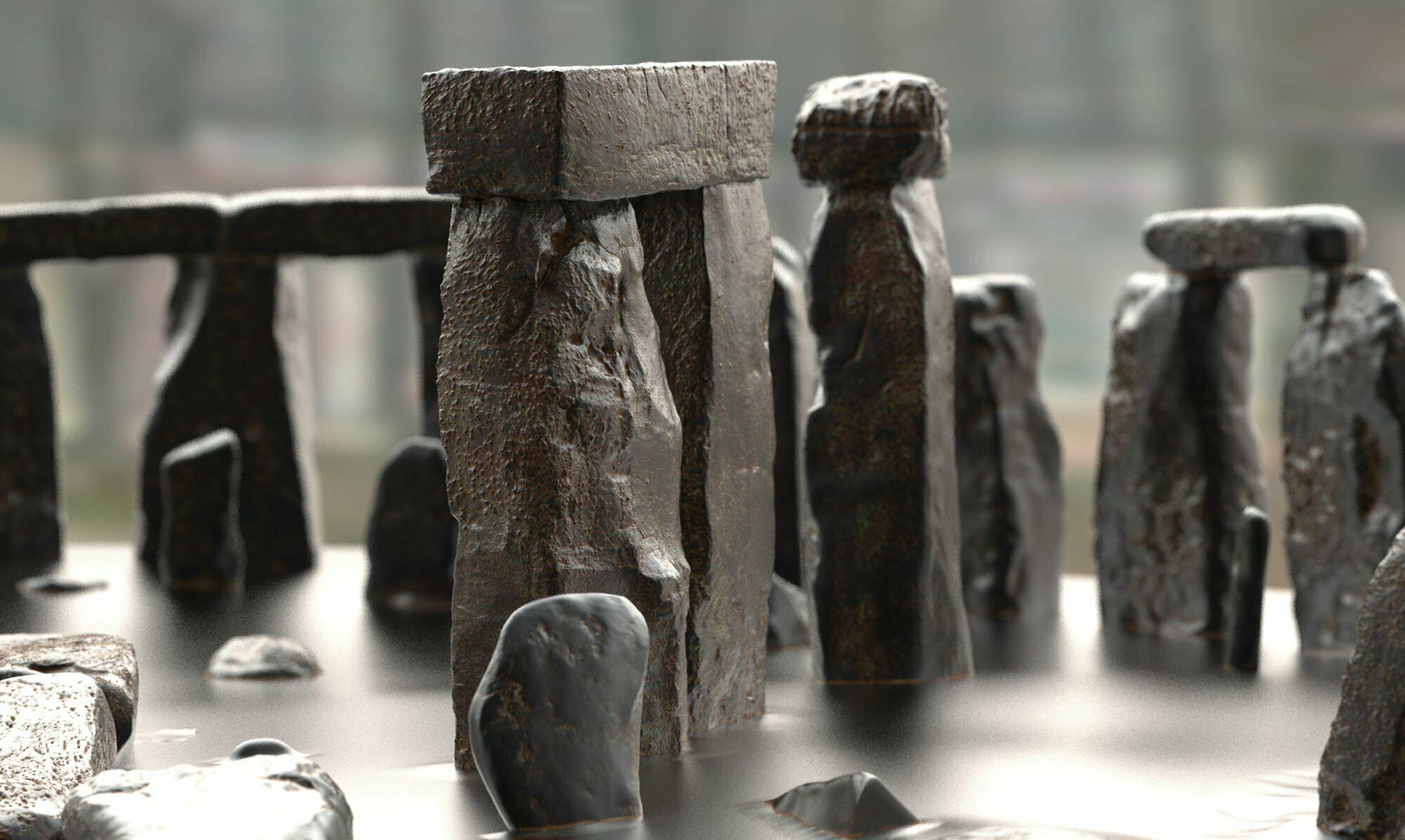Photographs of Stonehenge’s Great Trilithon Two
Known as The Great Trilithon because the central trilithon, which also goes by the name The Great Trilithon, Trilithon Three, the tallest, is no more, having fallen apart in antiquity. So, our T2 is now the tallest, most mighty. And it is easily the bulkiest, most undamaged of them all. Witness: the shorter, T1’s crinkled, weather eroded lintel and T4’s lintel, nibbled at by hammer welding Victorians in the 161 years it spent prone. Trilithon Two’s lintel has crisp, square edges and shows a beautiful curved outer face. So, to some, me included, it is… The Greatest Trilithon.T2 is also called The South Trilithon. Because it’s south. Though, there is a more southerly trilithon (S7, 6 and 107) the remains of the outer circle, so I don’t like the moniker. Sadly, as we’re not privy to the builders’ original name, Trilithon Two is the best identifier.
Fatty & Skinny
Otherwise, known as: Stone 54 and 53. The builders surely had names for individual stones. Perhaps as gods, perhaps after a worker who picked it out of the pile. For me, spending time sculpting and colouring the pair, it was easier than their anaemic and academic catalogue numbers. And the bulk of Fatty compared to Skinny is awe-inspiring. Some say, it’s male and female, and each trilithon has a Fatty and Skinny, a man and woman. True, but hardly noticeable elsewhere. Who is to say, male is bigger. Perhaps, a pregnant female is the bulkier.
Orange and purple
Fatty is orange, Skinny is purple. OK, I exaggerate. More orange-tinged-grey than your easy-peeler from Spain. Probably because of rust. Though, how, when, why is moot. Since both stones came from the same place: West Wood. The lintel S154 is also purple-ish, though so much is covered by green lichen.
Perhaps, the purple is from more tourmaline in the quartz rich water that cemented the sand, in that spot, while a few feet away, there was a little more iron. Or perhaps the staining happened a million years after they were created, by the above clay beds, washing through the fissures and cracks, and more and deeper on the upper surfaces. But, now… Which are the upper surfaces? And how deep did the chipping away by the builders, to create those flattened faces, let alone the rough outer faces.
Sarsen is a beautiful, complex, random stone. The colour may be millions of years old, then, cut away by the builders, then come back over these last 4,500 years, soaked back to the surface, with all the rain.
Distinguishing features
The 17th century graffiti on Stone 53 inner face, easily noticed, at eye level: Johannes Ludvicus De Ferre.
IOH:LVD:D∑ F∑RR∑. There’s a load more scrawled names near and about here.Less noticeable, indeed, only “discovered” 1953, the many ancient axes, maybe 42, and a single dagger. (There may be another, smaller dagger.)
Oddly, and uniquely, Skinny’s inner face is polished, but only 6 foot above ground. It’s likely this was done once the stone was upright. Possibly the same time as the Early Bronze Age flanged axes, maybe 1 – 1,000 years after the raising of the sarsens. Or are they Middle Bronze Age 1,000 – 1,500 years after the sarsen raising? The ‘sketches’ aren’t great, could span hundreds of years, and technology is recycled and reused well in those days.
I find it simply delicious, the two quartz veins running diagonally, lower left to upper right on the bottom of Skinny’s inner face. They cut right through the four sides. You can make them out on the outer face, too. What must those magical thinkers have thought 4,500 years ago?
Fatty
Stone 54 outer face builders’ marks. 6 foot tall longitudinal ridges, cross-hatched with 6 inch (15.24 cm) tooling lines. I think of Fatty’s rear as more of a sketch than a finished object.
The gap, puzzles me. I’m kinda slim, 6 foot. But, I really need to squeeze myself through. Smaller, people get through easily. I worry I could get stuck.
Lintel
Our lintel, too, has distinctively sharp edges and corners, where T1’s has strangely rotted. T4’s lintel, rounded by collectors, after falling in 1797 and raised in 1956.
T2’s lintel, also has flat faces, just that horizontal scar and gash on the right on the inner face. The outer face of our lintel has that odd folding, best seen on the middle left. Still, it is the house brick of all the stones at Stonehenge.


